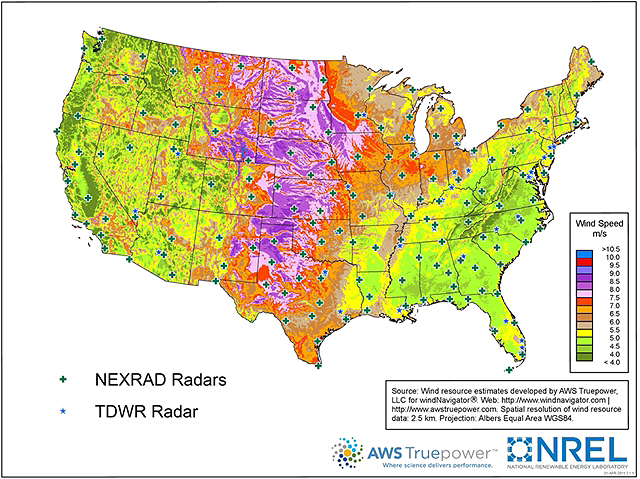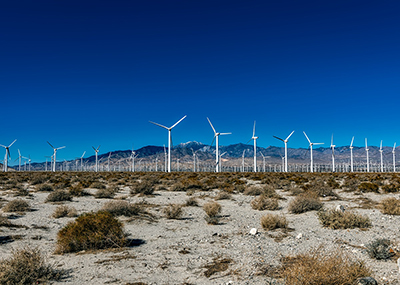WIND ENERGY
Of the many practical meteorological related wind power production issues, a number of specific points are generally stressed by the renewable energy industry related to wind power production:
- Safety
- Turbine Performance
- Day-to-Day operations and
- Grid Balance
In each situation, the specific requirement calls for a reliable short-term (24 hour) weather forecast of both mean and turbulence meteorological fields within the lowest layers of the Earth’s atmosphere – ranging generally from the surface to roughly 250 m in altitude. This is also the layer of the atmosphere which offers significant challenges for current mesoscale Numerical Weather Prediction (NWP) models. Accuracies in mesoscale NWP forecast winds and temperature vary widely based on the selected domain for the mesoscale model. Wind speed bias often exceed 1.0 m/s during the day and can exceed 2.0 m/s during the night. Confidence levels for mesoscale forecast winds and temperatures at these accuracies are less than 30%.
Significant improvement in mesoscale model confidence levels are expected with:
- Inclusion of data assimilation of regional meteorological data sources
- Improved model grid scales and
- Improved sub-grid parameterizations
The key in each proposed component for improved forecasts is inclusion of representative meteorological measurements. The goal of the NOAA/ATDD – Duke Energy cooperative research effort is to explore the potential for improvements in the three above areas to translate into improved operational support for wind energy production.




